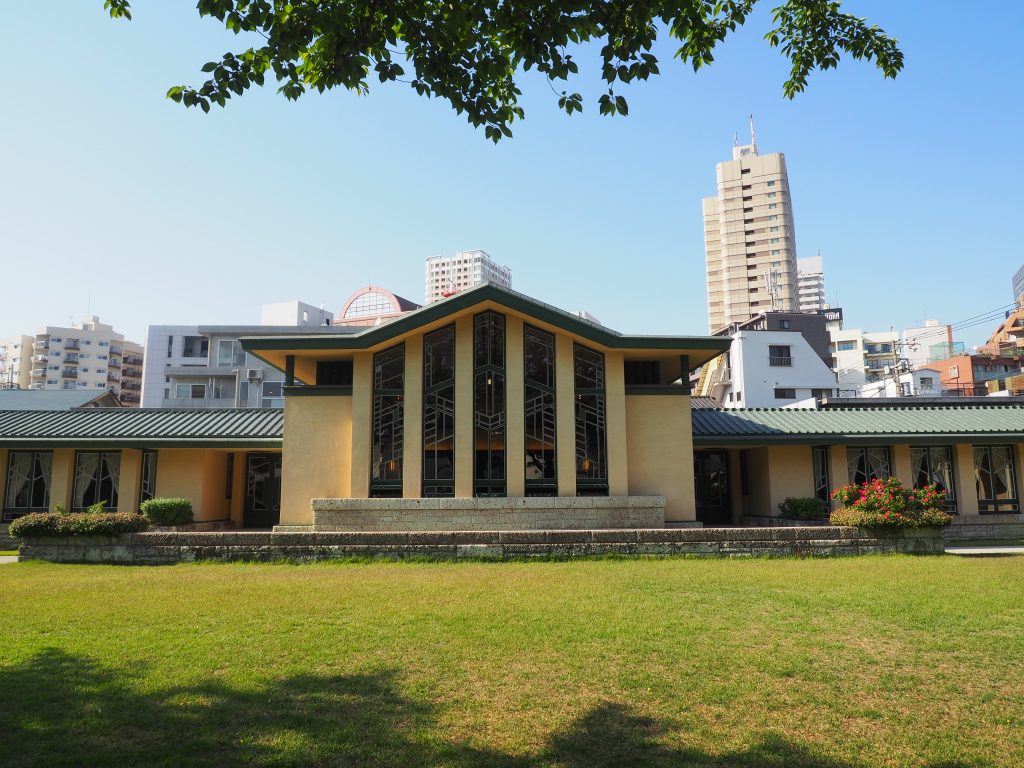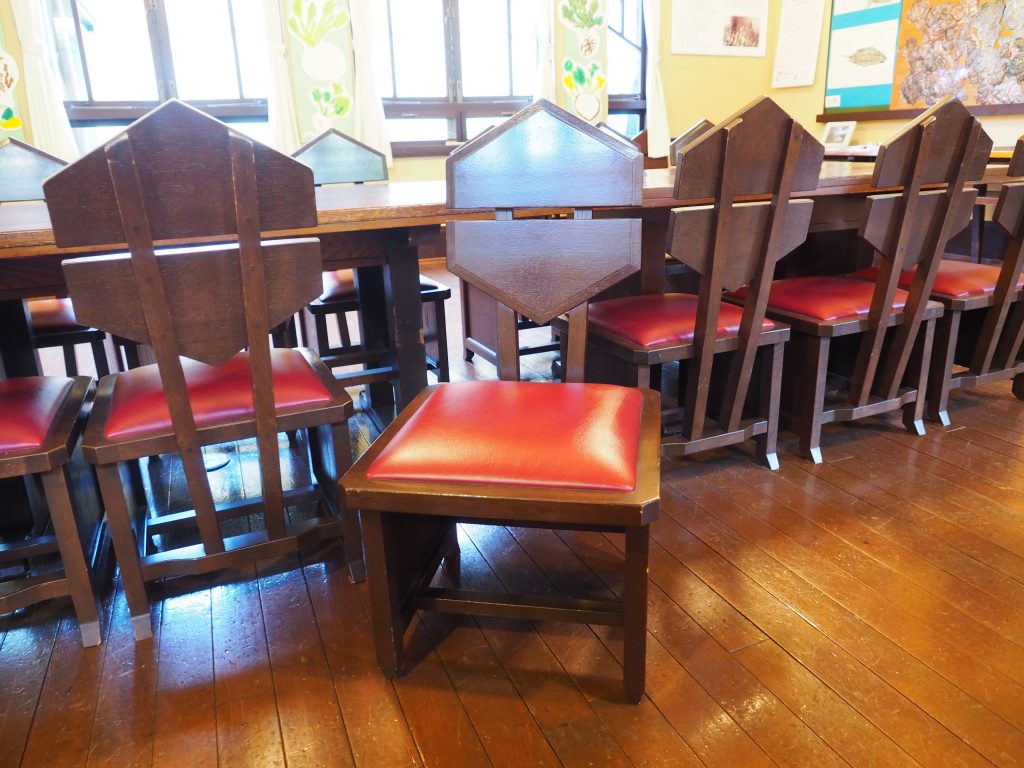I knew about this school building of Frank Lloyd Wright (1867-1959). It is just about in every book on architecture. And it certainly was one of the reasons that brought me to Ikebukoro. The building is in a maze of little streets but signs in the street facilitate finding it. Though it is smaller than I had imagined, it just enchanted me and I found it absolutely wonderful. Look for special brains behind it.
Motoko Hani (1873-1957) with her husband Yoshikazu Hani founded Jiyu Gakuen – girls´ junior and senior high school in 1921. Their architect friend Arata Endo introduced them to F. L. Wright, who was in Tokyo at the time. He had been invited by the imperial household in to build the Imperial Hotel and he was working on it. Though the hotel withstood, thanks to its construction, the Great Kanto Earthquake in 1923, it was demolished in 1968 for several reasons – despite protests.
F.L. Wright took up the design of the new school in 1921 and the construction of the school main building started. The Hanis named the building Myonichikan = the House of Tomorrow, from myo = tomorrow, nichi = day, kan = house. Jiyu is freedom in Japanese and Jiyu Gakuen means the School of the Free Spirit. Fortunately this building not only withstood the Great Kanto Earthquake but contrary to the F.L.Wright´s Imperial Hotel it is even preserved until today. On top of that many events are held here and even visitors are welcome!
It is wonderful that even the original furnishings are preserved until today. Especially because they were designed by F.L.Wright himself. He always designed furniture with the aim to achieve harmony of the building and the furniture. The size of the furniture was tailor made for the user – children in this particular case. F.L.Wright said: “The children seem to belong to the building in quite the same way as flowers to the tree. And the building belongs to them as the tree belongs to its flowers.” No wonder then that the chairs in this building are so unusually low.
There are many connections between F.L.Wright and Japan. He loved Japan – for him it was second only to the USA. In his words: “love is nothing more than a form of understanding”. That he understood Japan is clear from the design of this school.
F.L.Wright toured Japan in 1905, it was his first visit. He then published a book “Fifty Views of Japan” where the photographs he had taken were reproduced. Doesn´t it remember you to Thirty six views of Mount Fuji? He took photos of scenery, of buildings and monuments – and he took inspiration for his work from them. Not only inspiration for this school in Tokyo, but for buildings he designed elsewhere, too.
Japanese art definitely had and influence on F.L.Wright. He stressed the role Japanese prints played in his life in his own autobiography: An Autobiography, 1932: “If Japanese prints were to be deducted from my education, I don´t know what direction the whole might have taken.” He liked Japanese art and he was a collector of it. He had six thousand Japanese colour woodblock prints in his collection as well as Japanese ceramics, bronzes, sculptures, textiles, carpets and folding screens.











